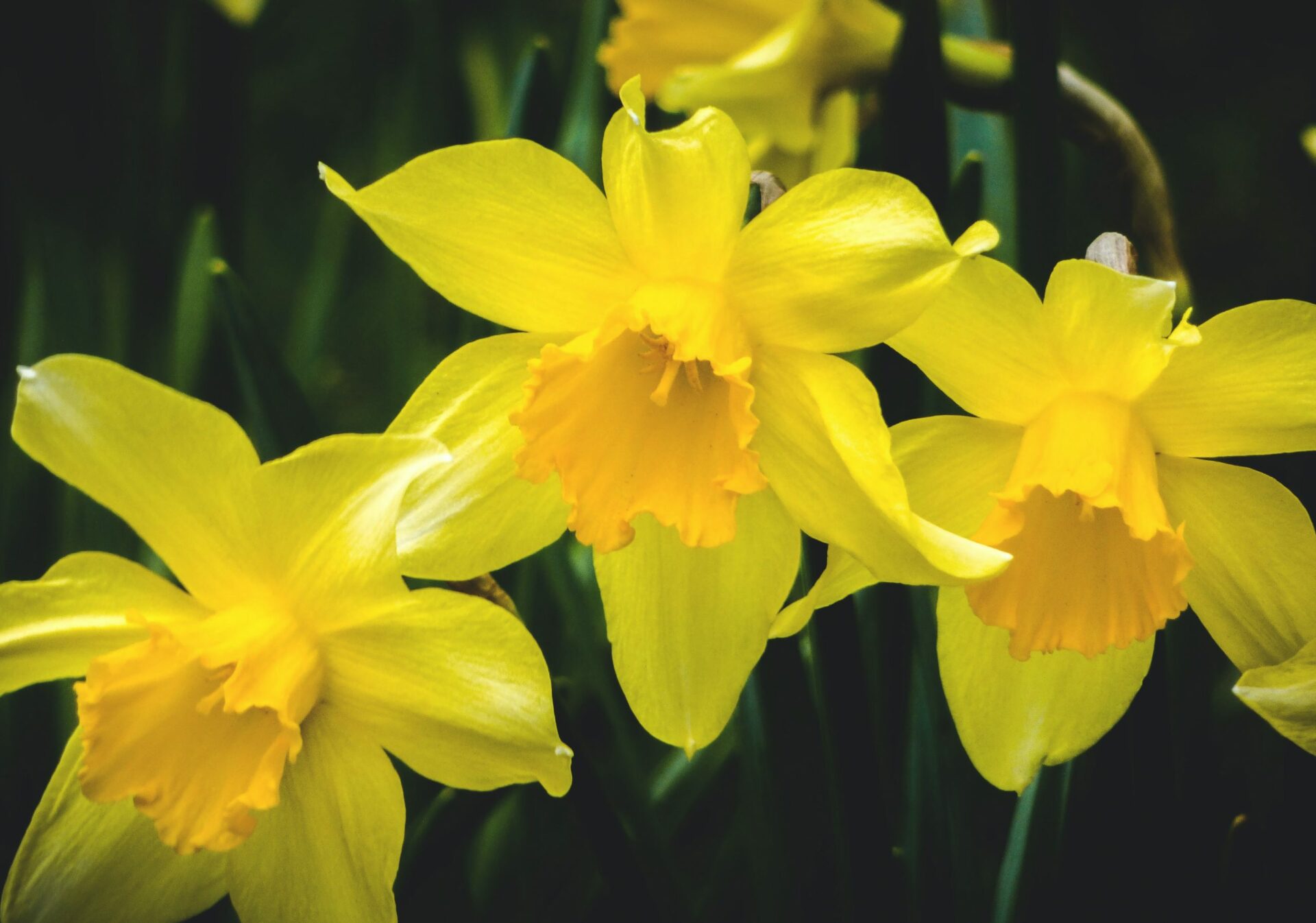Spring has Sprung:
 If there is a flower that radiates the look and feel of the sun after the long months of winter, it’s the daffodil, flower of March. This beautiful flower is a perennial bulb, so it will return year after year – laying dormant during the colder temperatures and bursting with bright life when the ground thaws.
If there is a flower that radiates the look and feel of the sun after the long months of winter, it’s the daffodil, flower of March. This beautiful flower is a perennial bulb, so it will return year after year – laying dormant during the colder temperatures and bursting with bright life when the ground thaws.Daffodils, Narcissus pseudonarcissus, are part of the Narcissus family and are native to Southern Europe. That being said, you can find them just about anywhere in Europe, North Africa, and North America at this point. Along with their bright yellow petals, a fringe-edged trumpet pops out in the center. You can also find other varieties that are all white, or white with an orange trumpet…or white with a yellow trumpet. The list goes on….
History of Daffodils
Around 300 BC, the cultivation of daffodils began. The Romans kicked off the spread by introducing bulbs to Europe and England. At the time, they believed daffodils to be useful for, cuts, bruises, inducing vomiting, and digestive issues. However, we no longer use the plant in these ways as too much use can be toxic to humans.
As daffodils grew all over Europe due to their hardy nature, the Dutch began to call them by the phrase ‘affo dyle.’ Meaning – ‘that which comes early,’ the root to the modern name we know now.
Since daffodils are one of the first flowers to bloom at the beginning of Spring, many cultures revere them as symbols of rebirth, joy, renewal, resilience, luck, and hope. Winters can be long and hard. Enjoying the hibernation begins to wear off towards the end of February (or middle of January) and many of us ache for sunlight, greens + brilliant colours, and a tepid breeze. Just when we think the cold may drag on forever, the daffodil bursts up from the ground in early March.
With the daffodil comes the remembrance and certainty that Spring is finally here (or well on its way). It is easy to see their resilient nature as they just braved the cold ground for months. Their sunny disposition brings that hope and joy as the energy from the ground comes pouring up into leaves, petals, branches, and our spirits.
Daffodils show up in many myths, folklore and religious texts. The name narcissus comes from the Greek myth about a man, Narcissus, who was gifted with the beauty of the gods. He was so obsessed with himself that when he was led to a stream by a goddess who was seeking revenge (for ignorant evil Narcissus had done), he fell in love with his reflection and couldn’t leave, eat or drink. Other gods and goddesses, began to worry about him starving, so they decided to turn him into a beautiful flower that blooms every spring.
In other mentions, Christians believe that a daffodil bloomed for Jesus the night before he was crucified in order to comfort him. Daffodil bulbs were also found in Egyptian tombs and daffodil wreaths were discovered in ancient Egyptian graves. Today, the daffodil is the national flower of Wales where it blooms around the celebration of patron St. David, The Feast of Saint David.
Health Benefits of the Flower of March
Although Daffodils are not used for the traditional medicinal benefits of their past, recent evidence shows that an active constituent, galantamine, is highly effective in supporting those that have dementia. Galantamine is an alkaloid that is usually found in the bulbs and flowers of snowdrops (the flower of February), but can be found in high concentrations in some daffodils. High altitude may play a key role in daffodil’s increase of galantamine production.
For those with Alzheimer’s, galantamine may help delay the damage to neurons as it is responsible for regulating enzymes and creating balance in the brain. This action may help slow down the degenerative symptoms of the disease.
A bouquet of Daff is perfect to share with friends and said to bring good luck. Maybe grace your dining room table with the brilliant trumpets sounding off joy and hope. Daffodils have been enjoyed for thousands of years, and they are here now, almost everywhere we look, so our hearts can be lifted. This Spring we rise up resilient with the daffodils, remembering to smile at and thank them as we walk by.







